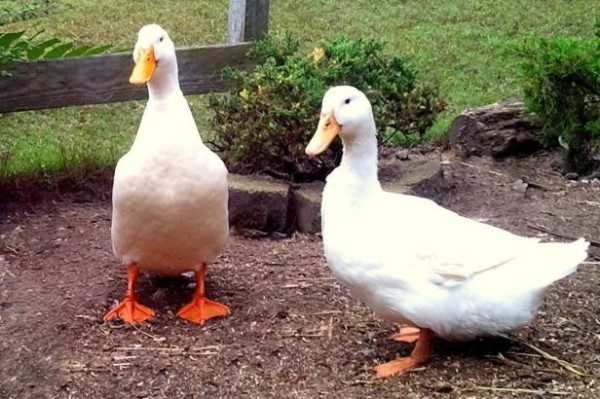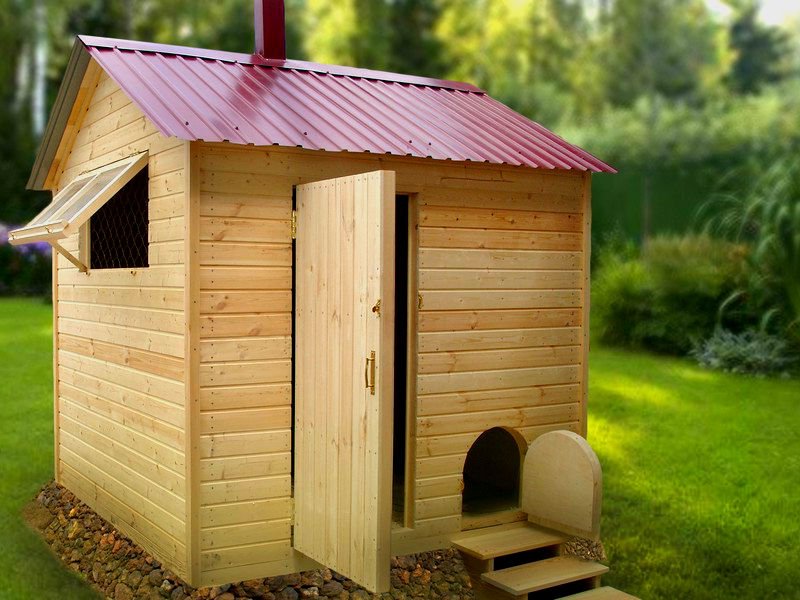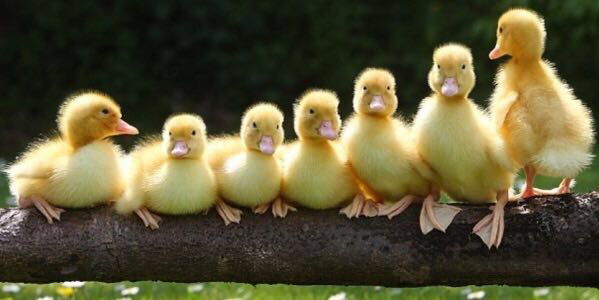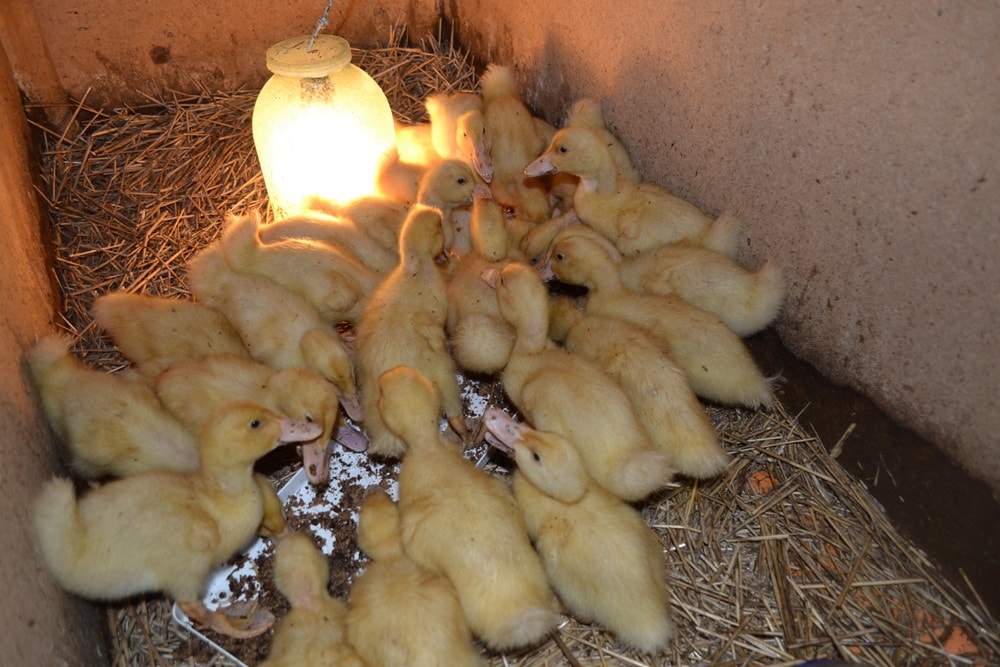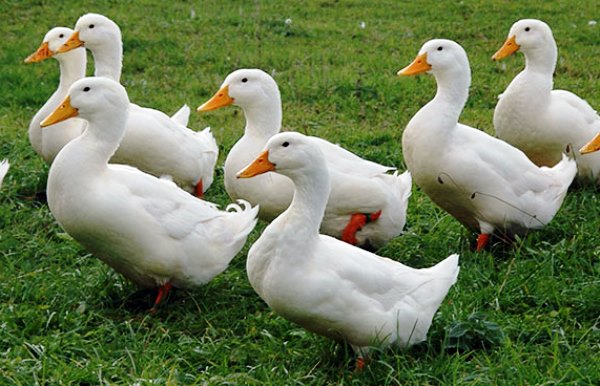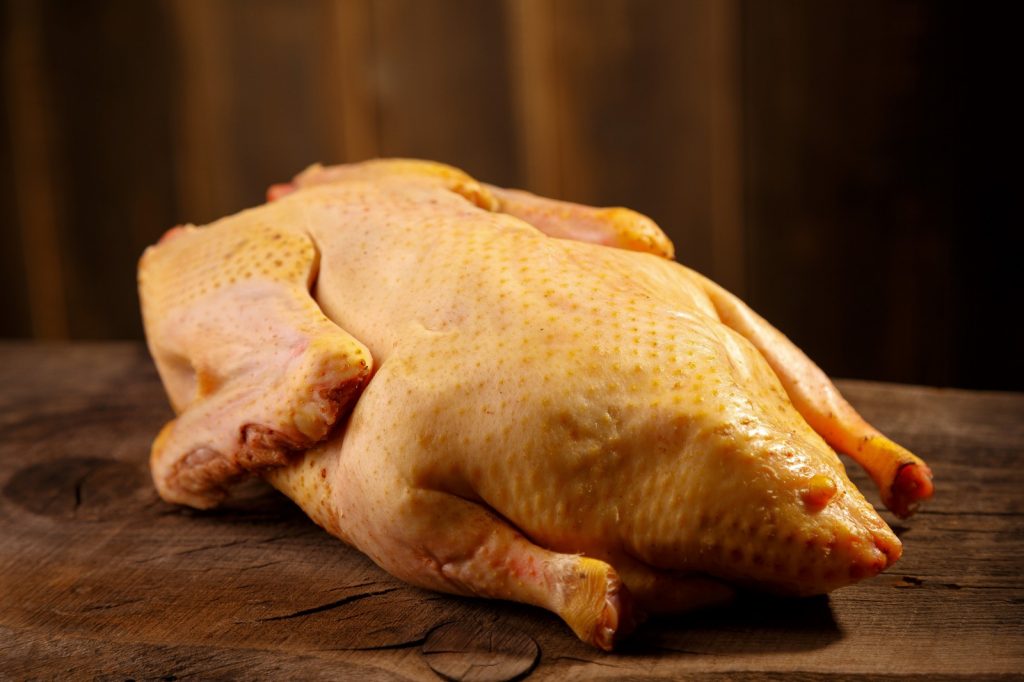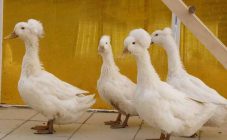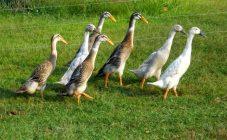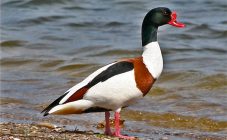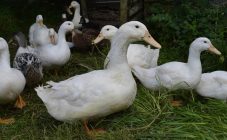Content:
Every day more and more people start breeding ducks in their dachas and backyard territories. This is due to many reasons: ducks' meat is not only tasty, but also useful due to the balanced content of macro- and microelements, these birds quickly gain weight, and also have a stable immunity to many diseases. All of these factors make these feathered favorites among farmers. The Agidel duck breed and cultivation features are the topic of today's article.
Ducks Agidel: description and characteristics of the breed
The main advantage of the new breeds is their high adaptability: they can be successfully bred in regions with unfavorable climatic conditions. Agidel duck meat is characterized by improved taste, as well as a reduced fat content, in contrast to other broiler breeds. Also, this variety has high vitality and productivity. The birds are balanced, quiet and inactive. Thanks to this temperament, they can be safely grown in the pen and in the pasture.
A sedentary lifestyle allows feed to be absorbed appropriately and to provide the maximum benefit for weight gain. In comparison with other bird species, Agidel is not susceptible to a large number of diseases.
[alert color = "yellow" icon = "thumbs-o-up"]Note!Agidel ducks are resistant to leukemia - the worst disease among ducks. [/ Alert]
Origin story
The breed was bred by breeders by crossing several species - Super M, Blagovarsky cross and Indian Runner breed. At the beginning of the 21st century, work began to improve the individual qualities of the breed. As a result, today there are 2 subspecies of Agidel ducks:
- Agidel 345;
- Agidel 34.
The main goal of the scientists was to reduce the concentration of fat in meat, as well as increase productivity. During the crossing of breeds, their individual characteristics, productive characteristics and taste of meat were taken into account.
Sometimes the breed is called the Adyghe ducks, which is a mistake. The homeland of the variety is the Republic of Bashkortostan.
External signs
Adults of the pure breed are rather large, they are characterized by a long and wide body, as well as a horizontal landing. Body weight is impressive. Visually represents a typical meat look. The feathers are white, the beak is well developed and has a bright orange color. In the phase of active growth, two-month-old birds can reach a weight of 3 kg.
| Egg production | Within one year, one bird is capable of producing approximately 250 eggs. The egg is characterized by a regular oval shape, large size, weight varies from 77 to 95 grams. |
|---|---|
| View | Broiler duck |
| The weight | A six-month old duck weighs on average 2.9 kg, and a drake 3.2 kg. The maximum weight was within 4 kg. |
| Head | The head is large enough, located on a long neck. There is a well-developed red-orange beak. Dark eyes that are set high enough. |
| Body | The massive and wide back is horizontal, the chest protrudes forward. |
| Plumage | The feather is painted only white |
| Legs | Short legs, light orange color, thin |
Productive qualities
A characteristic feature of the breed is its high egg production: one laying hen can produce up to 250 eggs per year.
During the breeding of the breed, scientists found out that birds are characterized by high uniformity and live weight at slaughter age. From one pair you can get about 10 kg of quality meat per year.
The presence of a reservoir will be an advantage for breeding ducks of the Agidel breed, if it is not there, then this is not a reason for frustration. A bird can do without water bodies, but there must always be water in its field of vision.
Duck Agidel: growing at home
Ducks do not need special attention and care. For life, they need a small duckling: there should be no more than 3 adults per 1 m². Excessive density increases the likelihood of developing infectious diseases, as well as leads to injury and prevents ducks from feeding.
In winter, the air temperature should not fall below 5 ° C. The ducks' habitat must be protected from drafts, which is especially important during laying and incubation of eggs.
Ventilation and lighting
The room must be well ventilated. This is due to the fact that during the life of ducks, various bacteria accumulate in the ducklings, leading to the development of infectious diseases. To ensure good ventilation, an impressive layer of straw (40-50 cm) is laid on the ceiling beams. To facilitate the task, you will need to use additional transverse poles. The high air permeability of the straw allows for additional air inflow and outflow.
If there are no windows in the room, artificial lighting must be provided. It is necessary to adhere to the standards of 5 W / m. The best option is the presence of a reflector on the lamps. The recommended duration of daylight hours for birds of this breed is 7-8 hours. During laying, the duration is gradually increased to 14 hours.
Equipment for ducklings
A bird of this breed can hardly tolerate high air humidity. The litter on the floor should always be thick and changed in time. Due to this, the room will always be warm and dry. Peat, dry leaves, sawdust or straw are suitable as bedding.
Ducklings care
It is recommended to keep ducklings up to 2 weeks old in a cage or box on the floor. If the second option is chosen, then the first 3 weeks the bird should be in the warmest and driest part of the house. After this time, they can be kept in any room with a waterproof bedding.
If the number of ducklings is not large (no more than 100 heads), then the corral can be made with your own hands from scrap materials. It is recommended to separate the individuals, in each cage there should be no more than 12 heads at a time.
In a room with ducklings, the air temperature should range from 28 to 30 ° C. It can be regulated using heaters or a stove heating system. This temperature regime should be maintained in the first days of the life of the ducklings, then the temperature is lowered to 22 ° C until 3 weeks of age.
At the age of one month, the room with ducklings should be 18-22 ° C, depending on the humidity and weather conditions. In the cage on the floor, you can install ordinary lamps with a reflector.If there are many ducklings (more than 100 heads), gas and / or electric heaters are used, as well as special installations with ultraviolet radiation and infrared heating.
In the first 2 weeks, the lighting in the room should be on for 24 hours. Further, the duration of daylight hours should be reduced, limiting itself to 9 hours per day. Humidity in the room with ducklings should not exceed 65-75%. It is also recommended to eliminate third-party odors and drafts and control the dryness of the litter. It is worth updating it every 2 days.
You can feed the following products:
- food waste;
- wheat and corn turf;
- beet;
- boiled potatoes;
- herbal flour;
- carrot;
- fresh herbs.
Adult birds of the Agidel breed are not at all whimsical in their choice of food. The best option is whole grain feed. Ducks also drink large amounts of water, sometimes washing down their food, so they often walk between the trough and drinker, spreading dirt. Quite often, due to such walking, the birds interfere with each other's normal feeding. In this case, the alternative to grain is grass.
Free-range birds have the advantage: their meat is lean, almost dietary, because they eat when they want. If the ducks feed from the feeder, then in winter they are slept 2 times a day, and during the laying period - 4.
Breeding the breed
Before breeding Agidel ducks, you need to clearly decide what will be used for these purposes - planting hens or an incubator. It is much more profitable to get a new generation by incubating eggs, since after the brooding ducklings may not adopt all the breeding achievements of the breed. That is why 80% of ducklings of the Agidel variety are bred with the help of an incubator, and this is a significant drawback of the breed.
To minimize losses during the hatching phase, you need to adhere to the following recommendations:
- Eggs for laying should be carefully selected. They must be free of mechanical damage, they must be fresh with a uniform shell surface.
- It is recommended to pay special attention to the temperature regime. Depending on the period of eggs, it should be like this: 1-14 days - 37.7 ° C, 15-21 days - 38.3 ° C, 22-26 days - 38.7 ° C.
- During the day, eggs in the incubator must be turned over at least 10 times. This will prevent the embryo from sticking to the shell.
- The air humidity in the incubator should be 60-70% for the first time, after which it is reduced to 40-45%. When the ducklings begin to hatch, the humidity level is better, on the contrary, to increase to soften the shell.
- Eggs should be cooled at least 2 times a day, always keeping the same intervals. The duration can vary from 10 to 30 minutes.
After hatching the ducklings, you need to take care of the temperature regime and lighting in the room where they will be kept.
When slaughter is made
Agidel is a broiler breed that is rapidly gaining weight. The slaughter is done early enough. Duck for meat can be used at the age of 8-9 months. At this time, the feathers of the ducks are not yet fully formed and are extremely delicate. Thanks to this feature, it will be possible to completely and effortlessly clean the carcass and make it attractive to potential buyers.
However, the goal of any slaughter is not only to obtain valuable and nutritious meat. An additional benefit of growing waterfowl is the high quality down and feathers. Light industry enterprises purchase such raw materials in large volumes. By its individual characteristics, duck down is practically no different from swan down. Bedding and winter jackets are made from it. Duck down products are in great demand in regions with unfavorable climatic conditions.
Interesting Facts
- Ducks of the Agidel breed go to the breakup. This is due to the structure of the paws with wide membranes. They try not to step on them, so it is easier for birds, leaning on one leg, to rearrange the other.
- Duck eggs should not be eaten raw, but they are readily used for the production of confectionery. They make baked goods especially tasty, fluffy and tender.
- Duck eggs are used in cosmetology. Protein is always added to homemade masks for oily skin. Rubbing the yolk into the scalp has a beneficial effect on the condition and structure of the hair, and also stimulates the activation of the hair follicles.
Breed advantages and disadvantages
The Agidel duck is in great demand among domestic farmers. This is due to the large number of advantages in comparison with the disadvantages. The main advantages of the breed:
- rapid weight gain;
- a strong immune system against diseases and infections;
- high quality of the resulting feather and down;
- for the broiler breed, a high egg production is observed;
- the breed is characterized by high adaptive properties;
- excellent taste of balanced meat.
Despite the large number of positive features, unfortunately, there are several disadvantages. The main ones are:
- a brood can be obtained only with the help of an incubator;
- a characteristic feature of all broiler breeds is the high fat content of meat.
Agidel are broilers that are designed for growing on an industrial scale and on small backyards. Even a small livestock is able to provide a breeder with up to 40 kg of tasty, healthy and nutritious meat. But before breeding a breed, you must definitely familiarize yourself with the features of caring for it, since there are nuances here.
